April 17, 2025 | 05:29 GMT +7
April 17, 2025 | 05:29 GMT +7
Hotline: 0913.378.918
April 17, 2025 | 05:29 GMT +7
Hotline: 0913.378.918
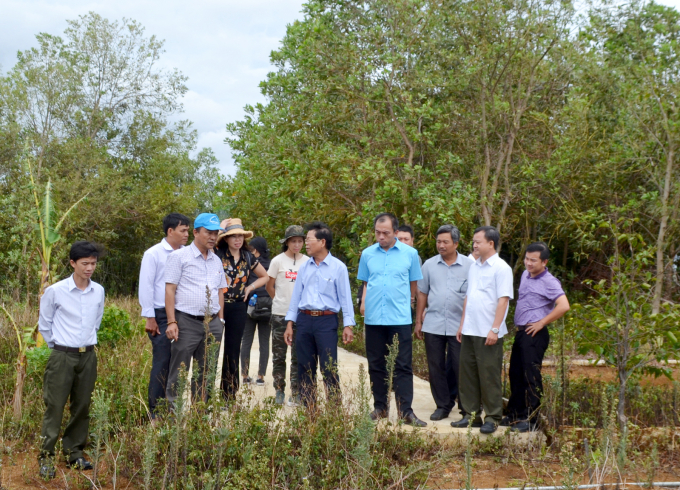
Phu Yen province leaders visit the large timber plantation of Bao Chau Phu Yen One Member Company Limited in An Tho Commune, Tuy An District. Photo: Chung Ngoc.
According to the Phu Yen Department of Agriculture and Rural Development, the province planted forests on the total area of over 32,040 hectares, of which 30,395 hectares is for production and 1,645 hectares for protection and special uses.
By now, the forest has covered about 243,876 hectares of total area of the province, including 127,943 hectares of natural forest, 98,588 hectares of planted forest and 17,345 hectares of planted immatured forest. The forest coverage rate in the province was at 45.09% by 2020.
Notably, local forest owners have applied the process and techniques of intensive forestation and chosen quality seedlings; therefore, the annual output of planted forest timber has increased, yielding from 80-120m3 / hectare (to trees of 7-8 years old).
In addition, many of them have converted small timber plantations to large ones with the aim of improving economic value.
One typical example is Bao Chau Phu Yen One Member Limited Company in Tuy Hoa City, one of the forestation and wood processing companies in the province. The company planted nearly 1,000 hectares of new forest in 2020, increasing its total area of planted forest to over 4,200 hectares; about 1,600 hectares have been granted FSC forest certification (granted for businesses with sustainable forest management).
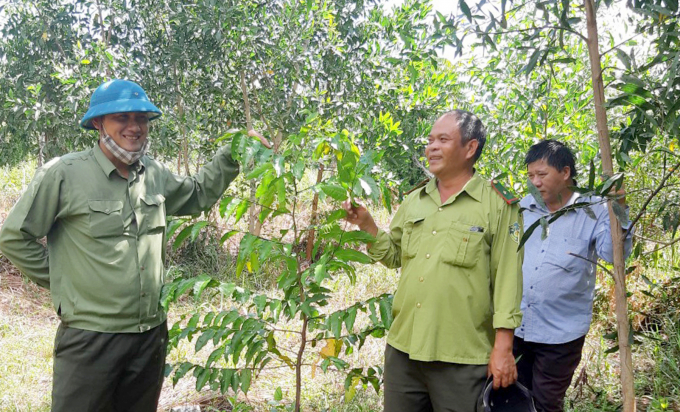
Forest owners are aiming to develop large timber plantations. Photo: KS.
According to Tran Dang Khoa, General Director of the company, the company is currently affiliated with local forest management boards and forestry cooperatives to plant nearly 5,000 hectares of forest, about 20-30% of which is planted with large timber for production.
The conversion of small timber plantations to large ones is one of the goals that the company is aiming at, he said
The company, therefore, develops a plan every year, according to which, some suitable area of small timber plantations will be converted to large ones at a rate of about 20- 30% when matured planted forests are exploited
Similarly, the Dong Xuan Protection Forest Management Board in Dong Xuan District is also aiming to conserve rare and indigenous tree species and develop large timber forestation for trading, promote research, conservation and development of medicinal plants in the forests.
According to Nguyen Trung Hao, Director of Dong Xuan Protection Forest Management Board, the unit has conserved and propagated marbled jewel orchids on an area of about 0.5 hectares since 2019.
In addition, the unit planted large timber on an area of about 415 hectares and the trees have grown well until now. The unit is also building a plan of planting marbled jewel orchids, lign-aloes trees and true cardamom in the forest area of about 110-120 hectares.
According to the Institute of Natural Resources and Environment of Hue University, planting large timber forests requires many factors such as long period of time, suitable environment and high investment costs, but it could bring high economic efficiency.
Many large timber forestation models deployed in the Central region have initially been successful, including Phu Yen Province.
However, localities also need to pay attention to planting indigenous trees, which is a sustainable silvicultural solution, suitable to local natural conditions, meeting the criteria of diverse biology and creating unique products to enhance product value.
Planting large tree forests is therefore expected to become a development orientation in the upcoming time with the aim of increasing income and stable profit exploited from forests for both forest owners and communities.
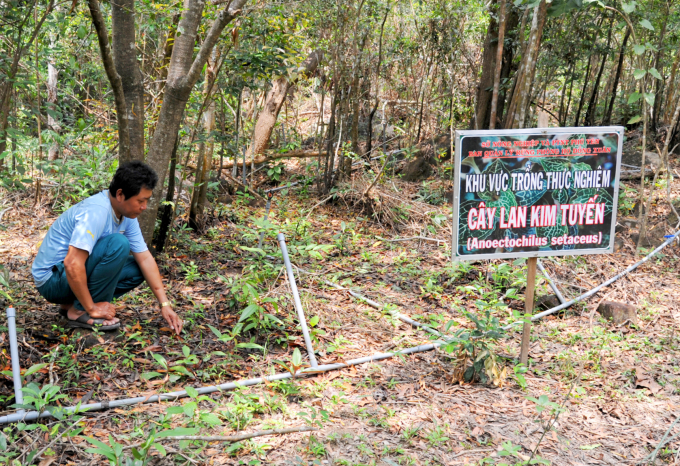
Dong Xuan Protection Forest Management Board experiment planting marbled jewel orchids combined with large timber forest. Photo: Chung Ngoc.
According to the Phu Yen Department of Agriculture and Rural Development, the value of planting large timber forests is 1.5-2 times higher than that of small ones.
The province has approved the project of planting large timber forests and planting non-timber forest products in the forests.
Accordingly, the project will be implemented by 7 selected provincial management boards of protective forests, special-use forests and forestry enterprises with need and conditions to plant forests for the purpose of trading large timber, forestry non-timber products, medicinal plantations, and transformation of small timber plantations into large timber plantations.
The total area for transforming raw timber forest into large timber and plantation of large timber forests, non-timber forest products and medicinal herbs in the forests is expected to reach 5,072 hectares in 2017-2025.
Translated by Thu Huong
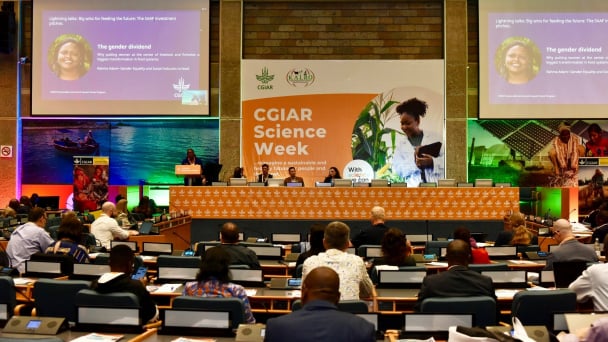
(VAN) The CGIAR’s Sustainable Animal and Aquatic Foods (SAAF) program represents a new approach that emphasizes the transformation of food systems toward sustainability.
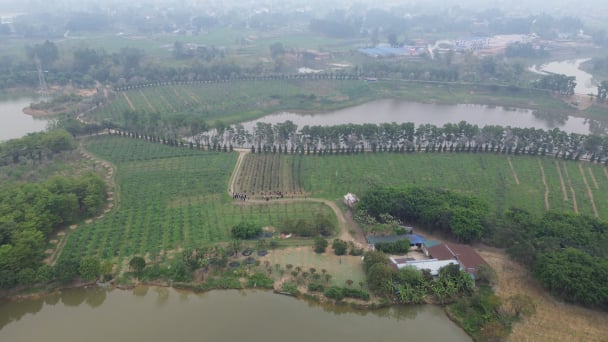
(VAN) Scientists assume that industrial agriculture has been 'outdated.' As a result, a comprehensive overhaul or a revolution in the direction of embracing ecological agriculture is needed.
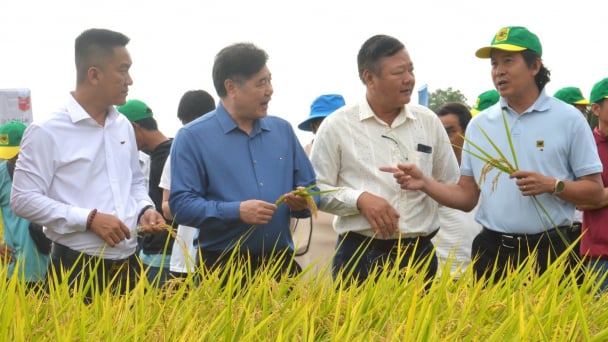
(VAN) The results from pilot fields are catalyzing the expansion of the One million hectares of high-quality, low-emission rice project in Kien Giang.
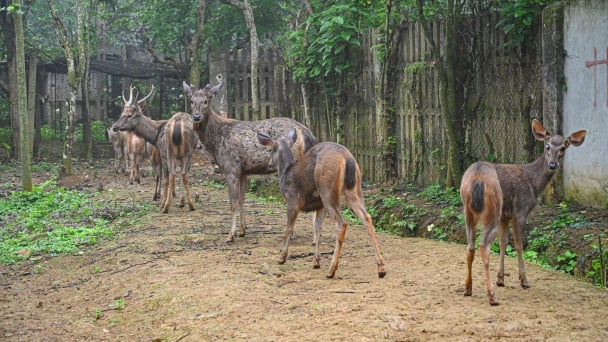
(VAN) On the morning of April 11, Cuc Phuong National Park received 18 individuals of endangered and rare wild animals from Da Nang city.
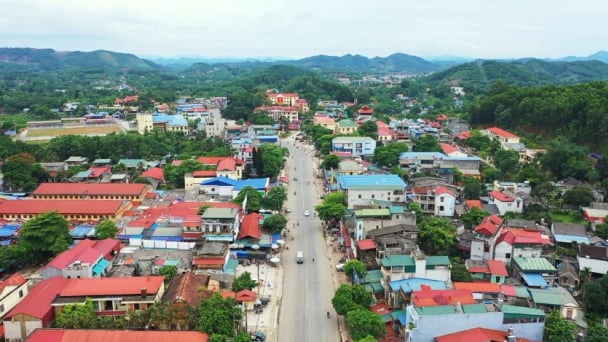
(VAN) FAO supports Vietnam in enhancing survey sampling techniques for the 2025 nationwide agricultural and rural census.

(VAN) By participating in the green transition, manufacturers become an indispensable part of the circular economy, contributing to resource optimization and environmental protection.
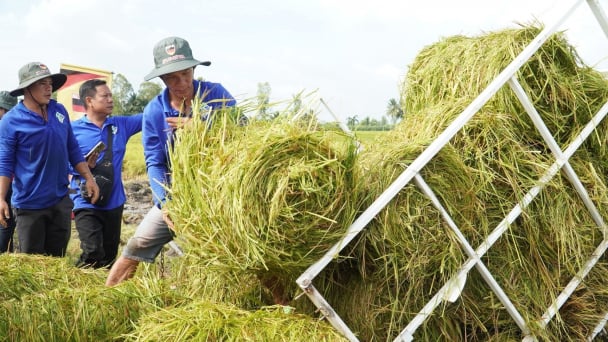
(VAN) The One Million Hectares of High-Quality and Low-Emission Rice Program can generate nearly 14 million tons of straw annually, posing an urgent requirement to diversify straw-based products.